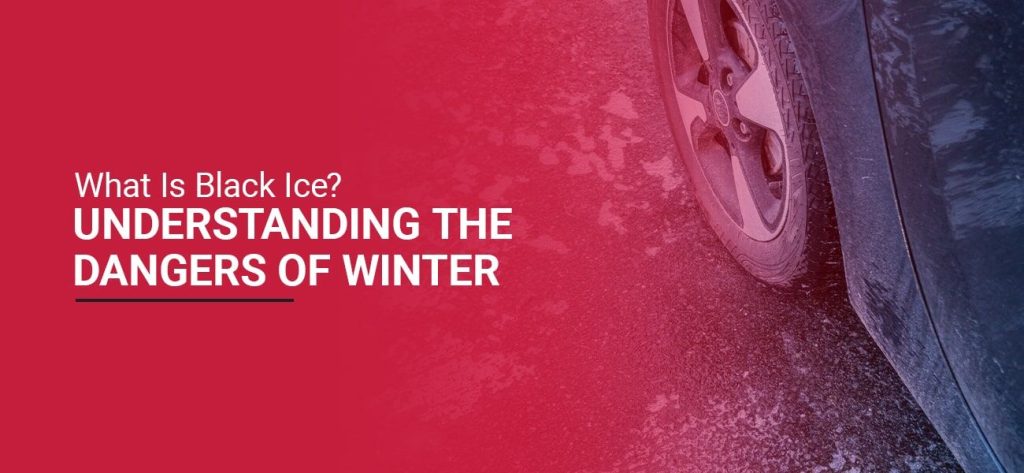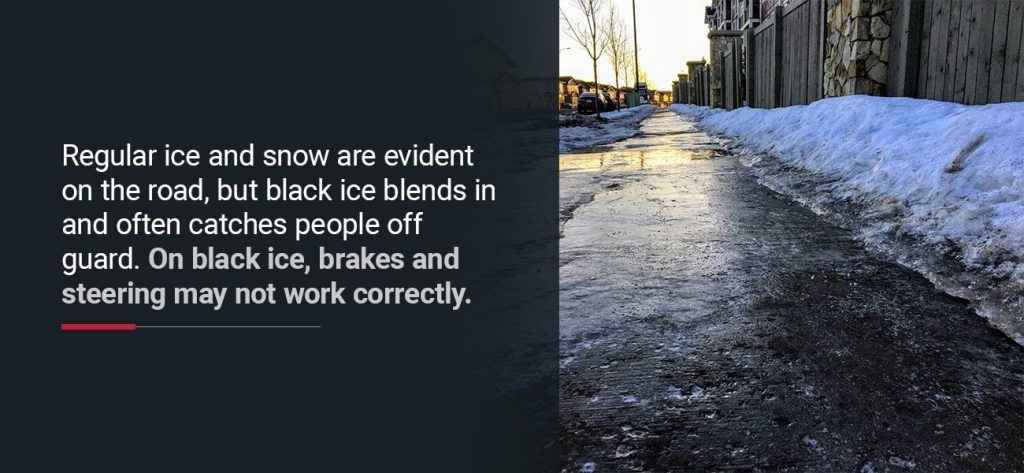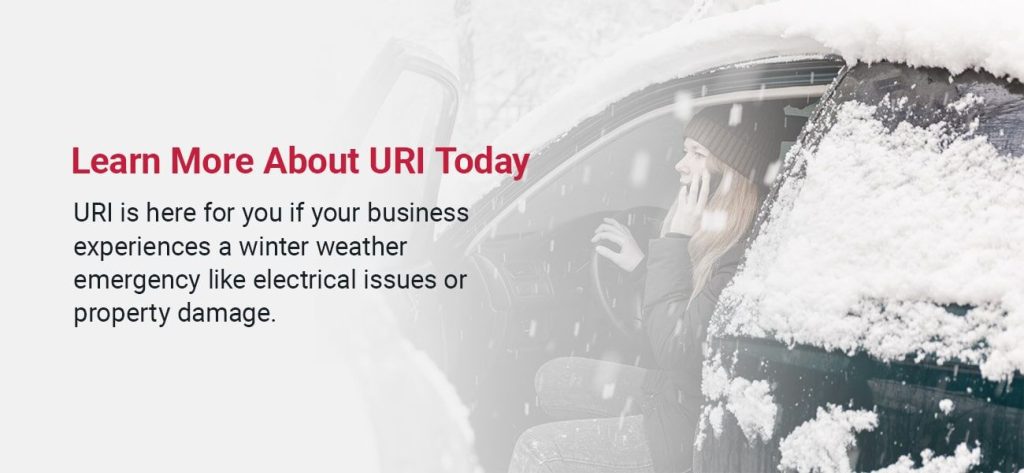
As the weather gets colder and snow begins to fall, winter safety is a topic on many peoples’ minds. According to the U.S. Department of Transportation Federal Highway Administration, almost 70% of people in the United States live in snowy regions, defined as areas that receive over five inches of annual snowfall. Winter precipitation can bring hazards like black ice, which can cause slips and crashes on walkways and roads.
When your business needs to prepare for winter weather, learning about the danger of black ice can help keep your doors open and visitors safe.
Black ice is a thin layer of transparent ice that is often more dangerous than regular ice. Whereas regular ice accumulation makes the ground look opaque, black ice is so thin that it is almost impossible to see without looking closely.
This type of ice derives its name from the fact that it is nearly invisible, blending in with the dark pavement under it. The transparent appearance makes black ice difficult for drivers and pedestrians to detect it.
Low temperatures can quickly cause snow and ice to form within the clouds and fall to the earth. However, black ice forms when freezing temperatures cause ice or water already on the ground to refreeze when melted.
Since water freezes at 32 degrees Fahrenheit, melted snow or any water standing on the pavement, like rain puddles, can freeze and form black ice. This makes for dangerously icy driveways and roadways. Black ice can also appear when fog or moisture in the air condenses and freezes on the ground below.
Black ice tends to form on paved surfaces rather than on grass or dirt. Bridges and overpasses are also more likely to develop black ice than regular roadways since the cold air flowing beneath the bridge chills the pavement even faster.
Another common location for black ice is beneath trees or other shade-producing objects like buildings. In shady spots and during the cool hours of the early morning and evening, conditions are more favorable for black ice to form.

The main dangers of black ice are that it makes pavement slippery and is nearly invisible. Regular ice and snow are evident on the road, but black ice blends in and often catches people off guard. On black ice, brakes and steering may not work correctly. Drivers could easily lose control of their vehicles, putting passengers and other people on the road in danger.
Statistics show that snowy and icy conditions lead to an increased risk of vehicle crashes and injuries. If you live in an area with cold winters, it is essential to know how to reduce your risk of encountering black ice.
It can be difficult to avoid black ice since it is generally invisible from the driver’s seat. This makes driving conditions more dangerous and limits drivers’ control over their vehicles. The U.S. Department of Transportation notes that 24% of annual weather-related crashes occur on icy or snowy pavement. To keep yourself and your loved ones safe while driving on the road, consider these tips to avoid black ice:
If you encounter black ice while on the road, your first instinct may be to hit the brakes. However, quickly braking when your vehicle starts sliding can further accelerate the slide. If you run into black ice, remember these tips:
Black ice affects pedestrians as well as drivers. Icy sidewalks and pavement can pose a hazard to people walking by businesses and residential properties. To protect pedestrians passing by your property, take the following steps before the cold weather hits:
Black ice may seem like a hazard you cannot control. However, taking these steps to reduce your risk can protect you and those around you this winter.

Snow and ice can be threats to businesses as well as individuals. Winter weather-related damage to business property can create costly expenses and lead to downtime.
URI is here for you if your business experiences a winter weather emergency like electrical issues or property damage. We provide emergency and disaster restoration services to quickly stabilize business operations and get you back to your regular operations. For over 25 years, we have provided timely and efficient 24/7 disaster restoration for commercial and industrial properties across the region. Contact URI today to learn more about our disaster recovery services.